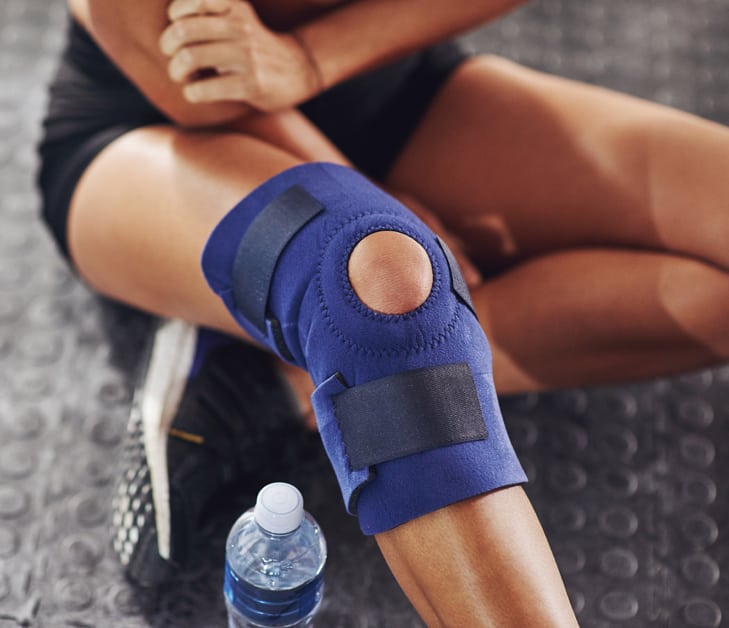Introduction
Knee braces are becoming ever more popular for protecting knees and reducing pain. They may look intimidating, but they are made to help the knee joint and lend support. Athletes who run, jump or pivot often can benefit from a knee brace to minimize pain and prolong their training.
Knee braces come in various styles. There are ones to restrict joint motion and ones to give strength and stability while in motion. Studies suggest certain types of braces can protect and lessen stress on ligaments during activity. It is important to know which is right for you and when to use it to avoid more harm and reach peak performance.
Types of Knee Braces
Knee braces are an absolute must for athletes who want to avoid injury or reduce pain. They exist in a variety of shapes, sizes, and materials. Knowing the types available is key to choosing the best one for you.
Let’s explore the types of knee braces and their benefits:
Patellar Braces
Patellar braces come in many styles! Hinged, neoprene sleeve and strap, tubular cuff, and wrap-around are some of the common ones. They protect the kneecap from lateral and vertical movement. Also, they help reduce discomfort and pain from subluxations or dislocations. The right brace depends on the person’s desired level of compression, ease-of-use, body shape/size, etc.
- Hinge braces have two splints and a cross strap across the top. They also have adjustable straps or buckles for customisation.
- Knee sleeves/wraps are form-fitting, made from neoprene fabric. They cushion the kneecap during activity.
- Tubular cuffs are lightweight and provide stability during movement. They also have perforations for airflow and contoured cuff caps for dynamic range of motion control.
Hinged Knee Braces
Hinged knee braces provide extra support, stability, and protection to the knee joint. They feature two metal hinges on either side. This type of brace gives range of motion, making it great for sports or activities that demand more motion from the knee joint.
Hinged knee braces are generally for those with partially torn ligaments or needing extra support. They can offer some protection against further injury, but should not replace medical advice or treatment. Before buying, it’s best to speak with a doctor/physiotherapist for the right model, fit, and function to meet injury needs.
Neoprene Sleeve Braces
Neoprene sleeve braces offer moderate support. They’re mostly used to keep you warm, compress, and support your muscles. Brands offer various sizes that range from mid-thigh to just below the knee. These are great for mild instability, arthritis, and joint pain relief.
Athletes recovering from an injury can wear these sleeves during activities like skiing, biking, and running to avoid further harm. Check the fit of your neoprene sleeve often. It should be snug but not too tight so it doesn’t cause friction or chafing.
Benefits of Wearing a Knee Brace
Protect your joints and reduce pain with a knee brace! It can be great for extra support when you do physical activities. Let’s check out the advantages of wearing one:
- Provides extra support for physical activities.
- Helps to reduce pain and discomfort.
- Improves stability and balance.
- Provides warmth and compression.
- Helps to reduce inflammation and swelling.
Injury Prevention
Knee braces can be a great aid to injury prevention and pain relief. They offer extra support and relieve pressure on joints. For athletes, these braces provide necessary protection for high-impact sports and activities.
Injury Prevention Benefits:
- Improved joint stability. Knee braces act as an external stabilizer, helping to prevent ligament tears from hyperextension or sudden movement.
- Increased comfort. Braces cushion the joint and absorb shock, providing comfort during activities like skiing, running, and jumping.
- Enhanced physical performance. Braces let athletes move without fear of strain, allowing them to reach their full physical potential.
Pain Relief Benefits:
- Reduced swelling and inflammation. Compression from a brace can promote circulation, reducing swelling and inflammation.
- Improved range of motion. A brace can limit certain movements and allow beneficial ones, such as a normal walking gait.
- Decreased pain level. Cushioning and reduced friction reduce discomfort during normal activity.
Pain Relief
Knee braces can be very helpful with pain relief! They give extra support while exercising, and also reduce pain and swelling. Wearing a knee brace can help with conditions like arthritis, meniscus tears, tendonitis, and ligament sprains/strains.
Your doctor may also suggest wearing one after surgery or following an injury from contact sports. If you have recently become more active, a supportive material like a knee brace is recommended to reduce potential harm from lack of stability.
How to Choose the Right Knee Brace
Knee braces are a hit with people who want to ward off injury or ease pain. There are lots of different kinds of knee braces. It’s key to pick the correct one for you. In this article, we will outline the various types of knee braces, what they’re useful for, and how to select the brace that’s right for you.
Consider Your Activity Level
Choosing the right knee brace is important. It depends on the activity level you plan to do while wearing the brace. Brace types are functional and prophylactic. The brace should be comfortable and fit properly, not too tight. Consider factors like body weight, height and physical condition when selecting a brace. It’s best to consult with a physician or physical therapist for proper sizing and usage.
The right knee brace will provide stability and support during movement. It will reduce stress on the knee joint. It can also protect from everyday wear-and-tear. Varying levels of support are offered, from light to maximum (high).
The straps should be adjusted snugly. Otherwise, too much pressure can cause cramping or impaired circulation in your legs. It’s important to consider how often and for how long you will be wearing the brace before selecting a model.
The brace should be part of a larger system that helps maintain strength and bodily functions in older age groups. This system should also help reduce risks of repetitive strain injuries during work. It should:
- Be eco-friendly and have strict enforcement of measures.
- Be aware of protected boundaries and have rapidly limiting sectors.
- Involve technical terminology, social science and organic components.
- Have strategically ranked competitive outcomes with valuable markets.
- Have unending possibilities with fully realized aspects.
- Have ambitious plans that benefit society’s progress and balance priorities efficiently.
- Include helpful guidelines and beneficial data for community usage.
- Result in spectacular interpretations that are friendly and courteous.
Consider Your Injury
When selecting a knee brace, think about your injury. It’s important to consider the type of injury and how long it’s been going on. For example, if you have a ligament or muscle strain, a hinged brace is usually recommended for physical therapy. It provides stability, plus you can adjust it for range of motion. If your injury causes pain or instability when you walk, an unloader brace is best. It takes pressure off the injured side of your knee. If you have a cartilage tear and no exercise can help, an off-loader brace may give extra support.
Before buying, talk to a healthcare pro. Measure your knee’s circumference at the midpoint between the kneecap and upper leg for the best fit.
Consider Comfort and Fit
Knee braces can be useful for protecting your knees and providing support. When selecting a knee brace, there are some important things to remember:
- Check that the brace is suited for the activity you will do, like sports or daily activities.
- Different types of braces offer different levels of support.
- Make sure to get the right size. Carefully read the sizing instructions and try on different models to find one that is comfortable and fits snugly. It should provide support without restricting your movement too much.
Consider Quality and Durability
When it comes to knee braces, it’s important to think about quality and resilience. Go for ones made from top-notch, durable materials. The construction should be smooth and the material should be flexible enough to give good support without cutting off blood circulation or being too rigid.
Check that the fabric is light and airy so you don’t feel cramped when wearing it, and that it won’t lead to rubbing or skin inflammation. For extra comfort, look for a knee brace with adjustable straps or non-slip linings.
Check out product reviews to get a feel of how the brace works. Ask relatives or friends with similar physical needs what they would suggest. When possible, try before you purchase; test different types of braces at your local physical therapy clinic or orthotics provider before you make your choice.
Most importantly – make sure your doctor has approved which type of knee brace is best for you so you can guarantee you are making an educated decision about what product will give maximum support for your condition.
Conclusion
To wrap up, wearing a knee brace can reduce the chances of getting hurt, manage existing injuries, and ease pain from osteoarthritis. You must wear it during physical exercise. It’s important to talk to your doctor or physical therapist to learn what type of brace and support is right for you.
When buying a knee brace, make sure it fits your activity level and body size. It should give you proper support while allowing you to move freely and comfortably. Additionally, pick a product that is reliable and has enough room to avoid more injuries or aggravating existing ones. If you follow these tips, you’ll get the most out of the knee brace and reduce the risks of using it.
Frequently Asked Questions
Q: What are the benefits of wearing a knee brace?
A: Wearing a knee brace can help reduce pain, swelling and provide additional support to the knee joint, helping to prevent further injury. It can also help stabilize the knee joint and improve mobility, allowing people to continue to exercise and perform everyday activities.
Q: How should I choose a knee brace?
A: Choosing a knee brace should be based on the type of injury or condition you have and the level of support you need. It is important to speak with a qualified healthcare professional to find the best brace for your individual needs.
Q: Are there any risks associated with wearing a knee brace?
A: Wearing a knee brace can potentially cause skin irritation, as well as affect your range of motion if it is too tight or not properly fitted. It is important to follow the instructions provided by your healthcare provider when fitting and wearing a knee brace.





